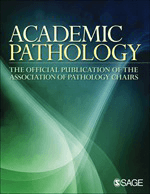
Academic Pathology
Scope & Guideline
Innovating Pathology: Where Science Meets Practice
Introduction
Aims and Scopes
- Pathology Education and Training:
A core area of focus is the development and evaluation of educational programs for medical students and pathology residents. This includes competency-based education, curriculum design, and innovative teaching methods. - Clinical and Translational Research:
The journal publishes research that bridges the gap between laboratory findings and clinical applications in pathology, including studies on diagnostic techniques, patient safety, and quality improvement. - Interprofessional Collaboration:
There is an emphasis on collaborative approaches in pathology education, involving partnerships between pathologists, medical educators, and other healthcare professionals to enhance training and patient outcomes. - Diversity, Equity, and Inclusion:
The journal addresses issues related to diversity and equity within pathology education and practice, aiming to promote a more inclusive environment in the field. - Use of Technology in Pathology Education:
A notable focus is placed on the integration of digital tools and technologies, such as virtual microscopy and online learning platforms, to enhance pathology education and accessibility.
Trending and Emerging
- Competency-Based Medical Education (CBME):
An increasing focus on CBME frameworks within pathology residency programs demonstrates a shift towards ensuring that training is directly aligned with the competencies required for clinical practice. - Innovative Use of Technology in Education:
The integration of technologies such as artificial intelligence, digital pathology, and online learning platforms is becoming more prevalent, enhancing educational methodologies and accessibility for students. - Patient Safety and Quality Improvement:
There is a growing emphasis on patient safety initiatives and quality improvement within pathology training, reflecting a broader trend in healthcare to prioritize patient-centered care. - Research on Diversity and Inclusion:
An emerging trend is the exploration of diversity and inclusion within pathology, with research focusing on gender, racial, and socioeconomic disparities in education and career advancement. - Remote and Hybrid Learning Approaches:
The adaptation of remote and hybrid learning formats, particularly accelerated by the COVID-19 pandemic, is an emerging area of interest, as educators seek to maintain engagement and effectiveness in pathology training.
Declining or Waning
- Traditional Lecture-Based Education:
There has been a noticeable decrease in research focused on traditional lecture formats as educational institutions shift towards more interactive and technology-driven approaches to teaching pathology. - Isolated Pathology Research:
Research that does not incorporate clinical relevance or interdisciplinary collaboration appears to be declining, as there is a stronger push for studies that connect pathology findings to broader clinical practices. - Focus on Basic Science Alone:
Papers solely emphasizing basic science without clinical application are less frequent, indicating a move towards research that directly impacts clinical training and patient care within pathology.
Similar Journals
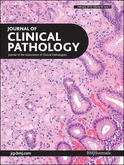
JOURNAL OF CLINICAL PATHOLOGY
Elevating Standards in Diagnostic ExcellenceJOURNAL OF CLINICAL PATHOLOGY, published by BMJ PUBLISHING GROUP, stands at the forefront of advancements in the field of clinical pathology, offering a platform for groundbreaking research and insights from 1948 to the present. With an impressive impact factor and categorized as Q1 in both Medicine (miscellaneous) and Pathology and Forensic Medicine for 2023, the journal holds a distinguished position in the academic community, ranking 22nd out of 208 journals in its category on Scopus and representing the 89th percentile. While the journal does not currently offer open access, it remains a vital resource for researchers, healthcare professionals, and students seeking to stay current with innovative methodologies, clinical techniques, and diagnostic advancements. Located in London, United Kingdom, the journal aims to bridge the gap between laboratory findings and clinical practice, emphasizing the importance of evidence-based pathology in improving patient care and treatment outcomes. Engage with the JOURNAL OF CLINICAL PATHOLOGY to enhance your understanding and contribute to the evolving landscape of clinical pathology research.

PATHOLOGICA
Unveiling Insights in Pathology and Forensic Medicine.PATHOLOGICA is a leading academic journal dedicated to the field of pathology and forensic medicine, published by PACINI EDITORE. With a rich history dating back to its inception in 1945, the journal has consistently contributed to the advancement of knowledge in these vital areas of medical research and practice. Currently ranked in the Q1 quartile for Pathology and Forensic Medicine and holding an impressive position as #42 out of 208 in the Scopus rankings, it reflects a significant impact within the academic community, boasting an 80th percentile ranking. The journal is committed to publishing high-quality, peer-reviewed articles that explore innovative research findings and clinical advancements, making it an essential resource for researchers, clinicians, and students alike. Though it does not offer open access, PATHOLOGICA continues to foster scholarly communication by disseminating cutting-edge research findings, thus playing a pivotal role in enhancing pathology education and practice worldwide.
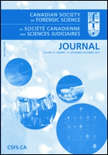
Canadian Society of Forensic Science Journal
Advancing Forensic Knowledge Since 1968The Canadian Society of Forensic Science Journal, published by Routledge Journals, Taylor & Francis Ltd, serves as a vital platform for the dissemination of research in the field of forensic science, particularly focusing on pathology and forensic medicine. With a rich history since 1968 and an impressive commitment to academic rigor, this journal has established itself as an essential resource for researchers, practitioners, and students alike. Recognized within the Q3 category in the 2023 Scimago Journal Rank in Pathology and Forensic Medicine, it ranks #162 out of 208 journals in its category, affirming its relevance and contribution to the field. While it does not operate under an open access model, the journal remains accessible through institutions and libraries and provides critical insights into advancements and best practices in forensic science. Through its comprehensive approach, the journal aims to advance forensic knowledge and contribute to the professional development of those engaged in this pivotal area of study.
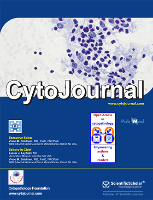
CytoJournal
Elevating Standards in Cytopathology through Innovative Research.CytoJournal is a leading open-access journal focused on the fields of pathology and forensic medicine, published by SCIENTIFIC SCHOLAR LLC. With its esteemed reputation, the journal has achieved a Q2 ranking in the 2023 Category Quartiles in its field, indicating its significant contribution and impact among its peers. Over its convergence from 2004 to 2024, CytoJournal has established itself as a pivotal platform for researchers, professionals, and students to disseminate and exchange pioneering research findings related to cytopathology and diagnostic techniques. With an emerging Scopus rank of #115 out of 208 in the field, the journal maintains a solid percentile ranking of 44th, underlining its importance in the scientific community. CytoJournal's commitment to facilitating open access ensures that critical insights and advancements in pathology and forensic medicine are easily accessible to those at the forefront of this essential area of study.

Malaysian Journal of Pathology
Unveiling the intricacies of pathology since 1979.Malaysian Journal of Pathology, published by the MALAYSIAN JOURNAL PATHOLOGY, stands as a pivotal resource in the fields of pathology and medicine, contributing rich insights since its inception in 1979. This peer-reviewed journal, based in Malaysia, is dedicated to disseminating original research, review articles, and case studies that advance the understanding of disease mechanisms and diagnostics. With a current impact factor reflecting its ranked positioning—Q4 in Cell Biology, Q4 in Histology, and Q3 in both Miscellaneous Medicine and Pathology & Forensic Medicine—this journal serves as an essential platform for researchers, clinicians, and students alike. Although it operates without open access, its scholarly rigor and contributions are well recognized, holding ranks such as #84 in Pathology and Forensic Medicine according to Scopus. The Malaysian Journal of Pathology is committed to fostering innovation and excellence in medical research, making it an invaluable tool for professionals seeking to stay abreast of significant advancements in the pathology domain.
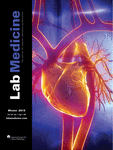
AMERICAN JOURNAL OF CLINICAL PATHOLOGY
Exploring the Depths of Pathological ScienceThe American Journal of Clinical Pathology, published by Oxford University Press Inc, stands as a vital resource in the fields of pathology and clinical medicine. With a rich history dating back to 1945 and an impressive impact factor reflected in its Q1 ranking in Pathology and Forensic Medicine, this journal serves as a cornerstone for researchers and professionals seeking to advance their knowledge and practice. Covering a breadth of topics within the discipline, it is recognized in 2023 as ranked #24 out of 208 in its category, highlighting its esteemed reputation within the scientific community. Although the journal does not currently offer open access, its rigorous peer-reviewed articles and cutting-edge research make it an essential addition to any academic or clinical library. The ISSN for print version is 0002-9173, with an E-ISSN of 1943-7722 available for digital access. Researchers, students, and practitioners alike will benefit from its comprehensive scope and commitment to disseminating high-quality scientific inquiry.
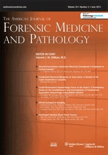
AMERICAN JOURNAL OF FORENSIC MEDICINE AND PATHOLOGY
Exploring the Intersection of Medicine and LawThe American Journal of Forensic Medicine and Pathology is a pivotal publication within the field of forensic science and pathology, dedicated to disseminating influential research and advancements in the evaluation of death and injury in legal contexts. Published by Lippincott Williams & Wilkins, this journal, which has been in circulation since 1980, serves as a vital resource for professionals, researchers, and students focused on intersecting disciplines such as medicine and forensic investigations. While it holds a respectable Q3 ranking in both the Medicine (Miscellaneous) and Pathology and Forensic Medicine categories as of 2023, the journal's impact is underscored by its contributions to the ongoing dialogue on forensic practices and methodologies. The American Journal of Forensic Medicine and Pathology provides a platform for innovative papers that shape the future of forensic science, also offering insights through case studies, reviews, and research articles that cater to its diverse readership. With an ISSN of 0195-7910 and E-ISSN 1533-404X, the journal continues to support the scholarly community in advancing knowledge within this critical field.

LABORATORY INVESTIGATION
Driving Excellence in Scientific Research and DiscourseLaboratory Investigation is a premier academic journal published by Elsevier Science Inc, specializing in the fields of Pathology, Forensic Medicine, Cell Biology, and Molecular Biology. With its ISSN 0023-6837 and E-ISSN 1530-0307, this journal has been a significant contributor to scientific discourse since its inception in 1952, converging into its current form by 2024. It holds an impressive standing in its respective fields, featuring a 2023 Journal Rank of Q2 in both Cell Biology and Molecular Biology, and an elite Q1 ranking in Pathology and Forensic Medicine, reflecting its influence and quality of research, as seen in its Scopus ranks—17th out of 208 in Pathology and Forensic Medicine. Although it does not offer Open Access options, the journal remains a vital resource for researchers, professionals, and students who seek to disseminate and engage with high-caliber research findings. The importance of Laboratory Investigation is underscored by its commitment to advancing the understanding of laboratory and translational medicine, paving the way for innovations that enhance clinical practices.

Pathologie
Unveiling the Complexities of Pathological ProcessesPathologie is a distinguished academic journal published by Springer Heidelberg, dedicated to advancing the field of pathology and forensic medicine. With an ISSN of 2731-7188 and an E-ISSN of 2731-7196, this journal serves as a vital platform for researchers, professionals, and students to disseminate innovative findings and insights. Currently ranked in the Q3 category of pathology and forensic medicine according to the 2023 metrics, Pathologie reflects a commitment to quality and relevance in a dynamic research landscape. Despite its relatively recent establishment from 2022, the journal is gaining traction with a Scopus rank of 139 out of 208 in its category, positioning itself as an emerging resource within the academic community. While it operates under a subscription model, the importance of the journal lies in its objective to facilitate the exploration of diverse pathological processes and enhance forensic methodologies, ultimately improving clinical outcomes and investigative practices. As it continues to grow, Pathologie stands poised to impact the pathology domain significantly.

Turkish Journal of Pathology
Pioneering Knowledge in Pathology Since 2013Turkish Journal of Pathology, published by the Federation Turkish Pathology Society, stands as a vital platform for disseminating high-quality research in the field of pathology and forensic medicine. With an ISSN of 1018-5615 and an E-ISSN of 1309-5730, this journal has been an open-access publication since 2013, ensuring that cutting-edge findings are readily available to the global community. Based in Turkey, it aims to contribute significantly to the advancement of pathology as it converges from 2010 to 2024, currently holding a Q3 quartile ranking in its category according to 2023 metrics. As it ranks #129 out of 208 in the Scopus database for Medicine, Pathology, and Forensic Medicine, it offers researchers, professionals, and students invaluable insights and innovative studies that address critical developments in the field. The Turkish Journal of Pathology fosters collaboration and knowledge-sharing, making it an essential resource for anyone involved in pathology research and practice.